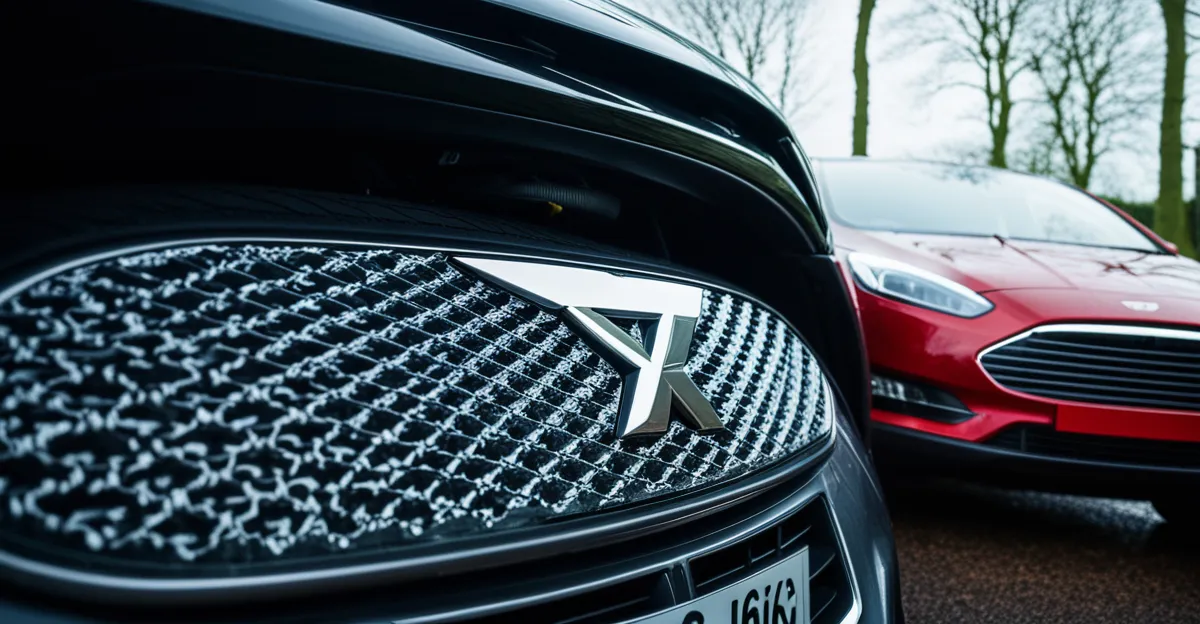Overview of UK Vehicle Safety Regulations
Vehicle safety in the UK is governed by a comprehensive regulatory framework designed to ensure all vehicles meet stringent safety standards before they reach consumers. The framework aligns with both national laws and international agreements, mandating adherence to prescribed vehicle safety standards that cover everything from structural integrity to occupant protection.
Over the years, UK vehicle safety regulations have evolved significantly, driving manufacturers to innovate and integrate enhanced safety features. This progression reflects both advances in technology and growing public demand for safer cars. The impact on UK car manufacturing compliance is substantial—manufacturers must continuously adapt their designs and production processes to satisfy updated regulations.
Have you seen this : How is Brexit impacting the supply chain of the UK automotive sector?
Primary authorities such as the Vehicle Certification Agency (VCA) and the Department for Transport play critical roles in setting these standards and overseeing compliance. They work closely with manufacturers and independent testing bodies to enforce regulations, ensuring vehicles meet safety criteria through rigorous assessment.
In summary, the UK’s vehicle safety regulations provide a robust foundation that supports industry-wide safety improvements, protecting drivers and pedestrians alike while fostering responsible innovation.
In the same genre : What are the strategies for reducing emissions in UK automotive production?
Testing Procedures Employed by UK Car Manufacturers
Vehicle safety testing is a critical step embedded within UK vehicle safety regulations to verify compliance and protect consumers. Crash test procedures are among the most recognized, assessing crashworthiness by simulating real-world collision scenarios. These tests evaluate occupant protection, structural integrity, and crash energy absorption.
UK car manufacturers conduct in-house testing early in the design and production phases to identify potential safety issues. This proactive approach allows rapid refinement before external evaluation. However, independent testing organisations provide impartial assessments to confirm vehicle safety performance meets established standards. These organisations often perform tests following internationally recognised protocols, ensuring consistency and comparability.
Before vehicles reach the market, manufacturers must secure vehicle certification UK approval. This certification confirms a model meets the prescribed safety standards and regulatory requirements. The process includes verifying documentation, validating physical test data, and demonstrating compliance to authorities such as the Vehicle Certification Agency.
In summary, vehicle safety testing in the UK combines thorough internal assessments and rigorous external procedures. This dual-layer testing framework fosters high confidence that vehicles comply with safety benchmarks, supporting UK car manufacturing compliance and the protection of road users.
Quality Control Measures in Manufacturing
Maintaining quality control car manufacturing processes is essential to uphold vehicle safety standards throughout production. Regular safety inspections are embedded within assembly lines to detect defects or deviations from specifications early. These inspections cover critical components such as braking systems, steering mechanisms, and structural welds, ensuring every vehicle meets stringent safety criteria before progressing.
Continuous process improvement plays a pivotal role, with manufacturers analyzing inspection data to identify recurring issues and implement corrective actions. This cycle improves both product quality and production efficiency, reinforcing UK car manufacturing compliance with evolving regulations.
Employee training is another key pillar. Staff on production lines receive focused education on safety protocols and quality assurance techniques. This cultivates a safety culture where workers actively participate in maintaining high standards and promptly report potential problems.
By combining frequent production line safety checks with ongoing improvement and workforce engagement, UK manufacturers build vehicles that consistently align with mandated safety requirements. This holistic approach ensures quality control is not a single step, but an integrated, dynamic component of the manufacturing process.
Compliance with Legal and Industry Standards
Ensuring compliance vehicle safety in the UK is a rigorous process grounded in both legal mandates and industry best practices. Manufacturers must adhere to the type approval process UK, a formal procedure certifying that new vehicles meet all safety, environmental, and technical requirements before sales. This includes detailed documentation review, physical vehicle inspections, and verification against applicable regulations.
One crucial set of rules impacting compliance is the UNECE regulations, international standards harmonised across many countries including the UK. These regulations cover crash safety, emissions, lighting, and electronic safety systems. Aligning with UNECE regulations streamlines vehicle approval and enhances safety consistency for UK manufacturers selling domestically or exporting.
Meeting legal obligations involves continuous attention to updates in both UK and UNECE frameworks. Manufacturers incorporate these evolving standards within their design and production cycles to maintain UK car manufacturing compliance. Industry standards also push innovation, encouraging adoption of superior safety mechanisms and higher manufacturing precision.
In practice, compliance means manufacturers must document and demonstrate that every vehicle model conforms to all relevant safety parameters prior to certification. This ensures vehicles not only meet minimum legal safety norms but also align with best practices, protecting consumers and reinforcing the UK’s strong safety reputation.
Advanced Safety Technologies in UK Vehicles
The integration of vehicle safety technology UK has transformed modern cars by significantly improving occupant protection and crash prevention. Active safety systems such as autonomous emergency braking (AEB), lane departure warnings, and adaptive cruise control are now commonly incorporated, enabling vehicles to detect hazards and sometimes intervene before collisions occur. These technologies enhance crash avoidance technology, reducing accident risk.
Passive safety measures continue to evolve alongside active systems. Engineers use innovative materials—like high-strength steels and composite structures—to improve crash energy absorption. This engineering advancement supports compliance with vehicle safety standards by enhancing vehicle integrity under impact conditions.
Digital innovations, including Advanced Driver Assistance Systems (ADAS), leverage sensors, cameras, and radar to provide real-time data for safer driving. Integrating these systems requires thorough testing to meet UK car manufacturing compliance criteria. Manufacturers carefully calibrate these technologies to function reliably across diverse driving situations.
Collectively, the adoption of both active and passive technologies reflects the UK’s commitment to advancing vehicle safety. These improvements not only comply with regulatory demands but also elevate consumer confidence and set higher benchmarks for global automotive safety. Manufacturers investing in these innovations ensure their products remain competitive and truly protective on UK roads.
Role of Government and Independent Oversight Bodies
The Vehicle Certification Agency UK is pivotal in enforcing government vehicle safety standards. It administers the formal certification process, verifying that manufacturers meet all necessary vehicle safety standards before vehicles enter the UK market. This agency acts as the official checkpoint, reviewing test data and ensuring ongoing compliance through audits and inspections.
Alongside the VCA, the Department for Transport helps establish regulatory policies, coordinating with manufacturers and independent organisations to maintain robust safety frameworks. Their joint oversight guarantees consistent application of UK safety laws and fosters improvements aligned with emerging technologies.
Independent vehicle safety assessment groups, such as Euro NCAP, complement government efforts by conducting unbiased crash tests and safety evaluations. Their publicly accessible ratings pressure manufacturers to innovate and maintain high safety levels, directly influencing UK car manufacturing compliance.
Regular external audits from these bodies ensure continuous adherence to evolving standards. This multi-tiered system combining government agencies and independent organisations strengthens the reliability of UK vehicle safety regulations. It provides consumers with clear safety benchmarks and helps manufacturers identify areas for improvement, enhancing overall road safety.
Case Studies: Examples of UK Manufacturers’ Safety Initiatives
Examining UK car manufacturer case studies reveals how leading companies implement automotive safety best practices to exceed UK vehicle safety regulations. For instance, some manufacturers have pioneered integrating advanced crash avoidance technology alongside traditional passive safety measures. This dual approach exemplifies commitment to comprehensive protection.
One notable initiative involves extensive use of real-world crash data to refine vehicle safety standards within their design cycle. By analyzing accident scenarios, these manufacturers tailor safety features to address specific risks faced by UK drivers. This targeted focus enhances UK car manufacturing compliance and yields tangible consumer safety benefits.
Another innovation includes adopting rigorous internal protocols that surpass regulatory testing benchmarks. These companies invest heavily in both crash test procedures and digital simulation tools to optimize vehicle robustness and occupant protection. The results in test outcomes often surpass minimum requirements, reflecting dedication to safety excellence.
Ultimately, these manufacturer safety innovations set influential examples for the automotive industry. Their success underlines the practical benefits of proactive safety integration, inspiring other UK manufacturers to elevate standards. Such advances demonstrate how adherence to regulations, combined with creative safety solutions, drives progress in protecting all road users.

